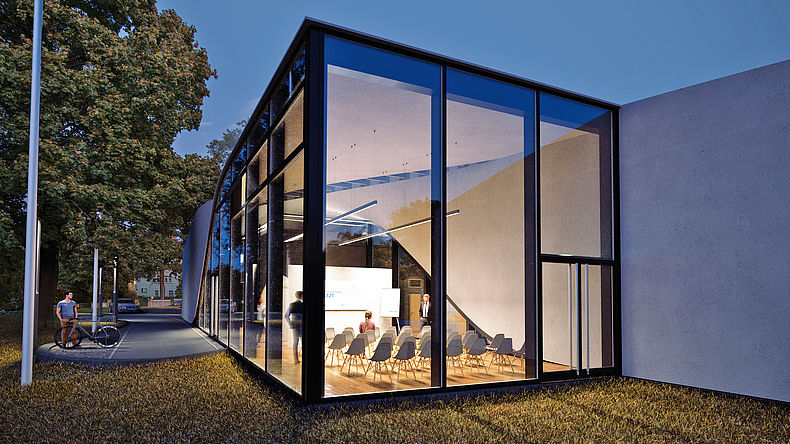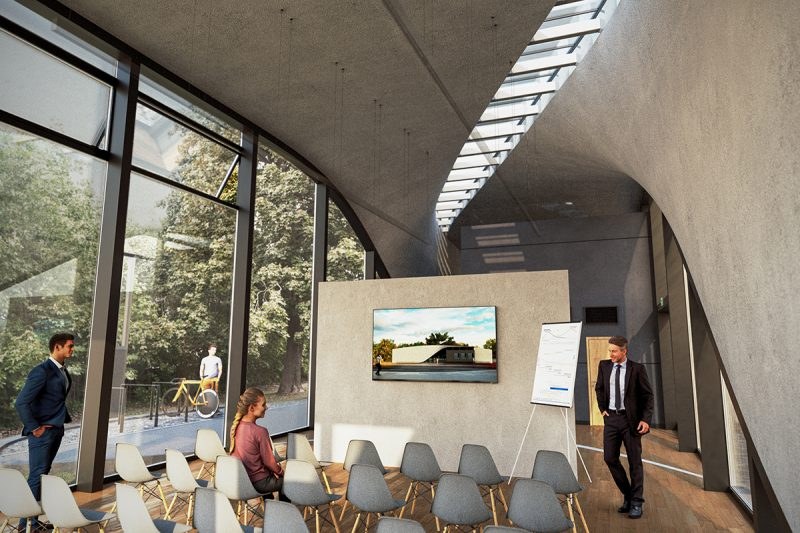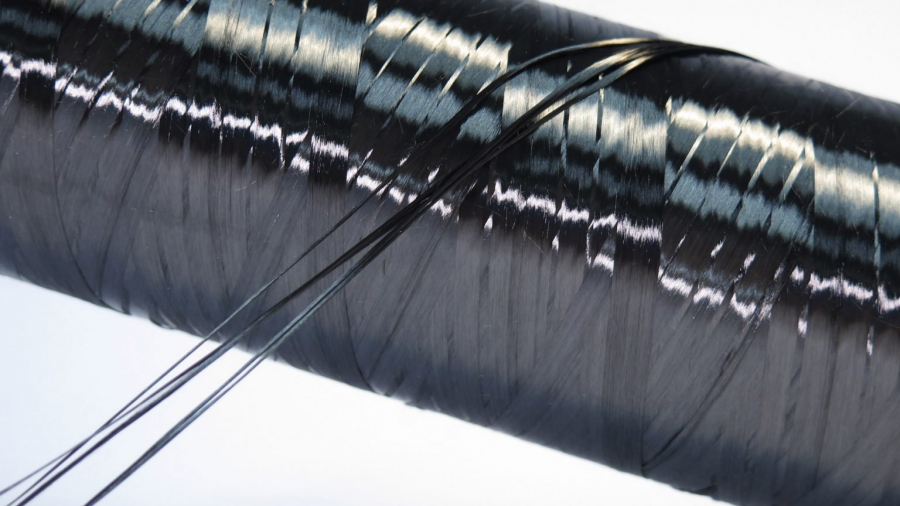Henn designed The Cube in collaboration with the Institute of Civil Engineering at the Technical University of Dresden, headed by Professor Manfred Curbach. Currently under construction on the campus of the Technical University of Dresden (Germany), the building is billed as "the world's first building made of carbon concrete".
Researchers claim that this newly developed concrete has a structural strength that is no less than that of concrete reinforced with steel bars, but requires much less concrete.

The Cube building is made of carbon concrete - Photo: TU Dresden
This type of carbon concrete is made by bonding together many carbon fibers – ultra-thin strands of nearly pure carbon crystals – through a thermal decomposition process called pyrolysis. These fibers are used to create a mesh, which is then poured over the concrete.
According to Henn, the resulting material is four times stronger than regular concrete, but also four times lighter, due to the reduced number of structural members. Unlike steel, carbon fiber mesh is a rust-resistant material, meaning carbon concrete has a longer lifespan than regular reinforced concrete. This also means that its structure can be much thinner and lighter, since much of the thickness of the concrete is due to the need to prevent water from seeping in and causing the steel to oxidize.

Another view of The Cube - Photo: TU Dresden
“The Cube’s design mimics the flexible, lightweight nature of carbon fiber by merging the ceiling and walls into a single entity,” Henn’s representative added. “It showcases and anticipates a future of architecture where environmental awareness is integrated with the freedom of design, radically rethinking and re-conceptualizing essential architectural materials. Walls and ceilings are no longer separate components but are fused together as an organic continuum.”
The building will house a major research project of the Technical University of Dresden calledC³ - Hybrid carbon concrete architecture, a project supported by the German Federal Ministry of Education and Research. The aim of the project is to explore the potential applications of this new material in construction.
"Carbon concrete can contribute to making construction more resource-efficient and freer, and switching to carbon concrete could reduce CO2 emissions by up to 50%.2from the construction process," Henn also said.

Simulation inside The Cube - Photo: TU Dresden

Simulation inside The Cube - Photo: TU Dresden

Inside The Cube building - Photo: TU Dresden
"The benefit is that we can make concrete significantly lighter but with much greater load-bearing capacity. So we can create a huge variety of designs. There are some studies of building components, benches or rebar made of carbon concrete. The aim is to get rid of the huge amount of concrete that is used today," Dr Erik Frank, a senior carbon scientist, told Dezeen.

Dr. Erik Frank, carbon research expert - Photo: Dezeen
However, the carbon footprint of carbon fiber is “typically very bad,” according to Dr. The researchers are looking at ways to create carbon fiber from lignin, a common plant-derived substance that is also a byproduct of the paper industry.

Bio-carbon fibre - Photo: Dezeen
He also predicts that bio-based carbon fibers will not replace petroleum-based carbon fibers, as they do not yet offer the same performance. However, he believes that demand for bio-based carbon fibers will continue to grow. “It will become a secondary market alongside petroleum-based carbon fibers,” he says.































